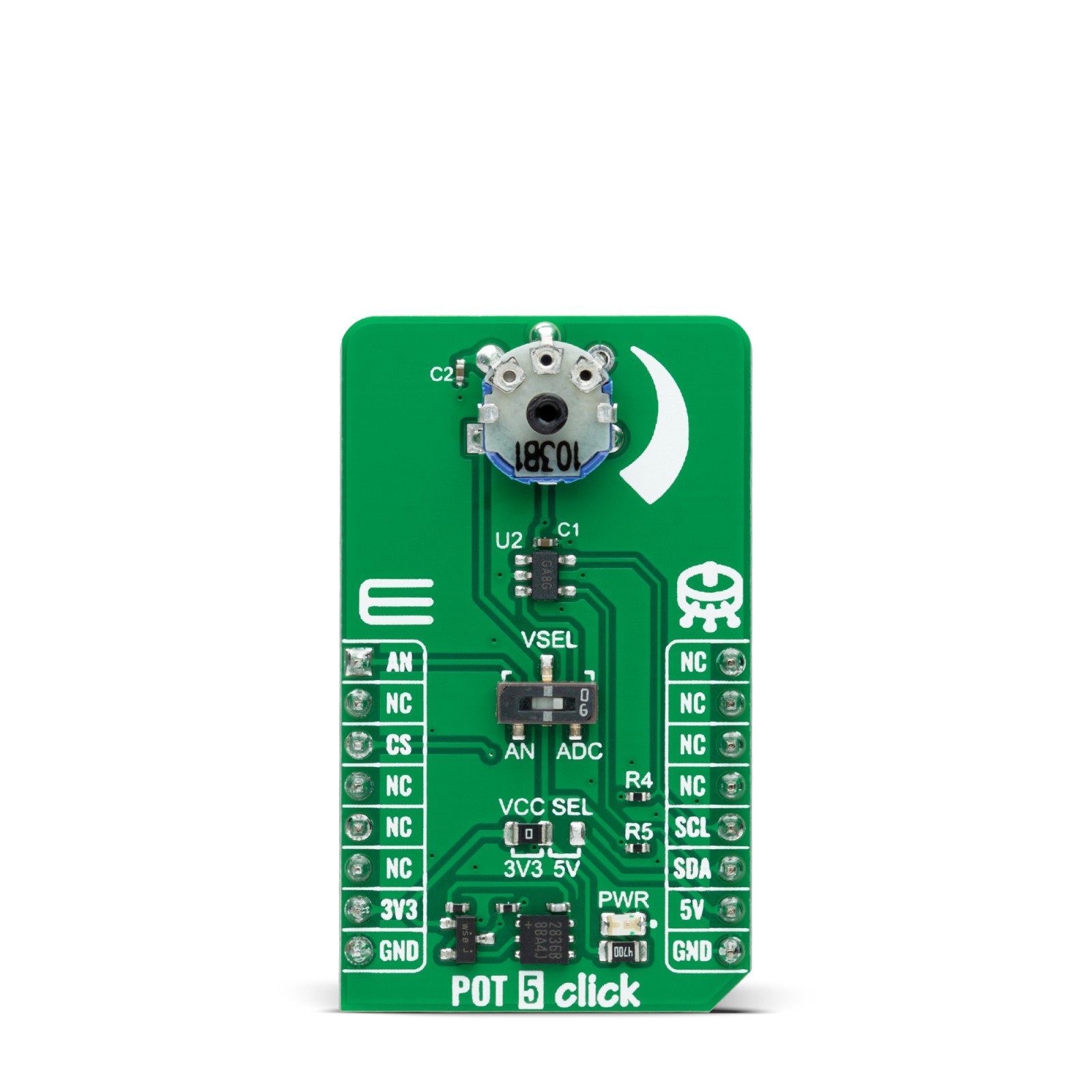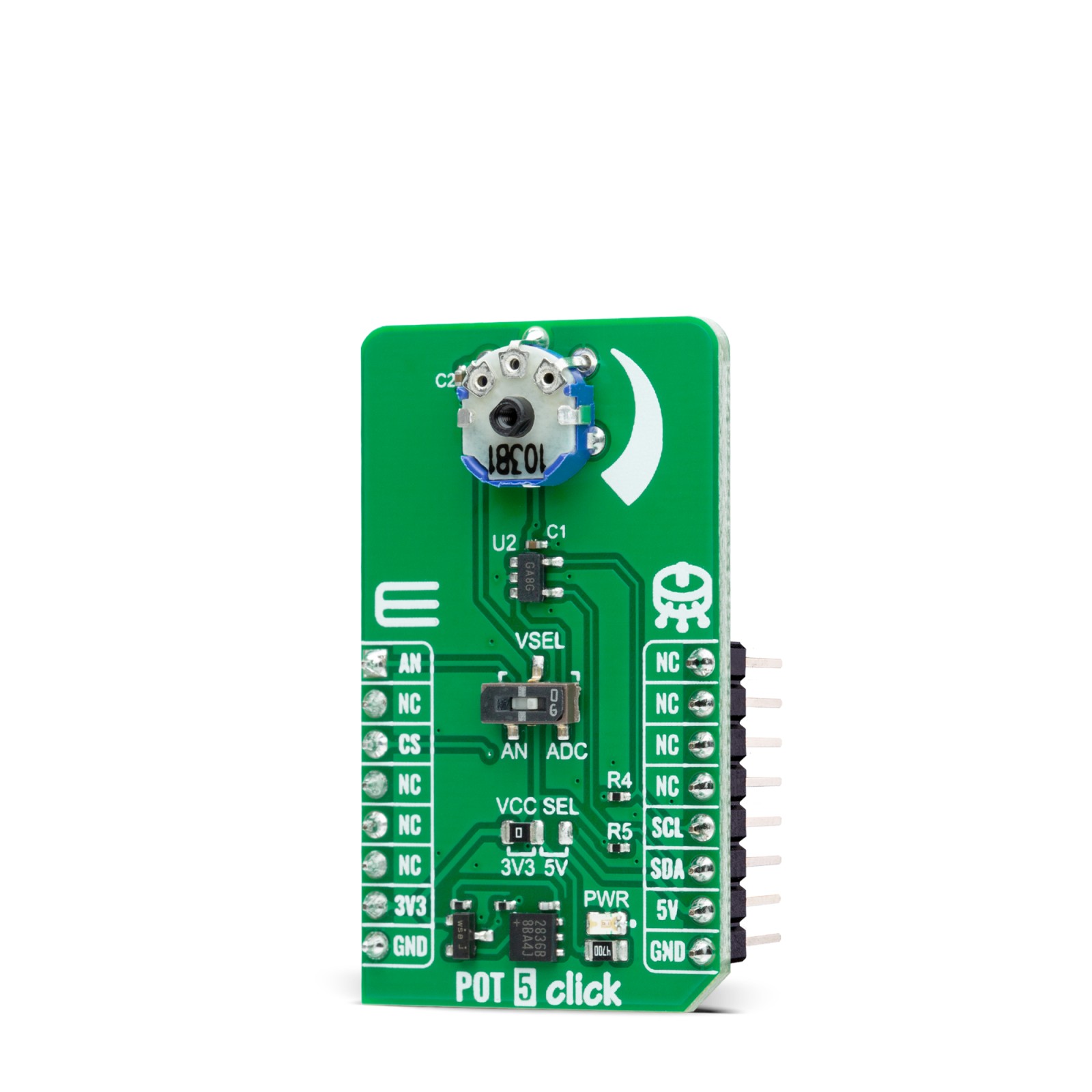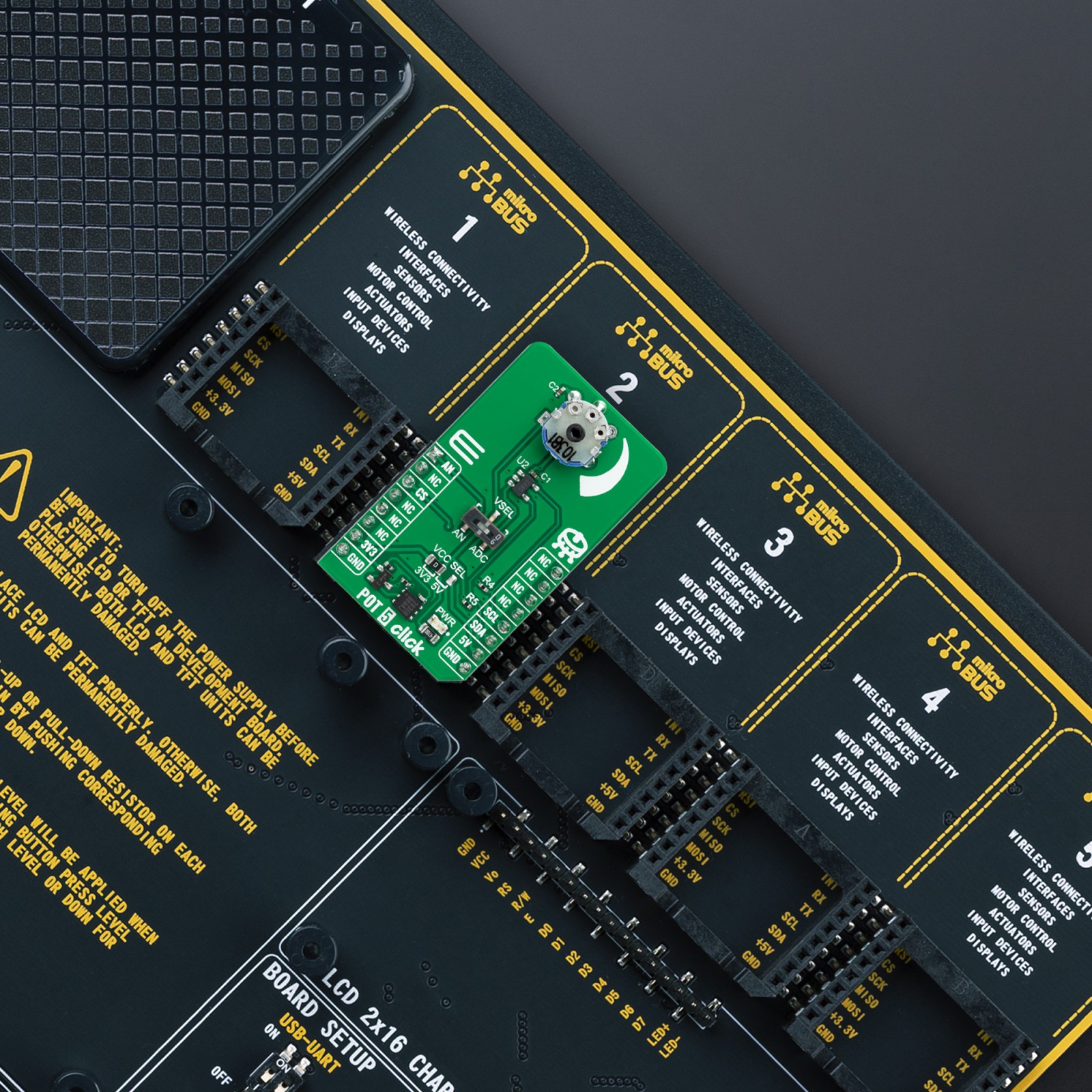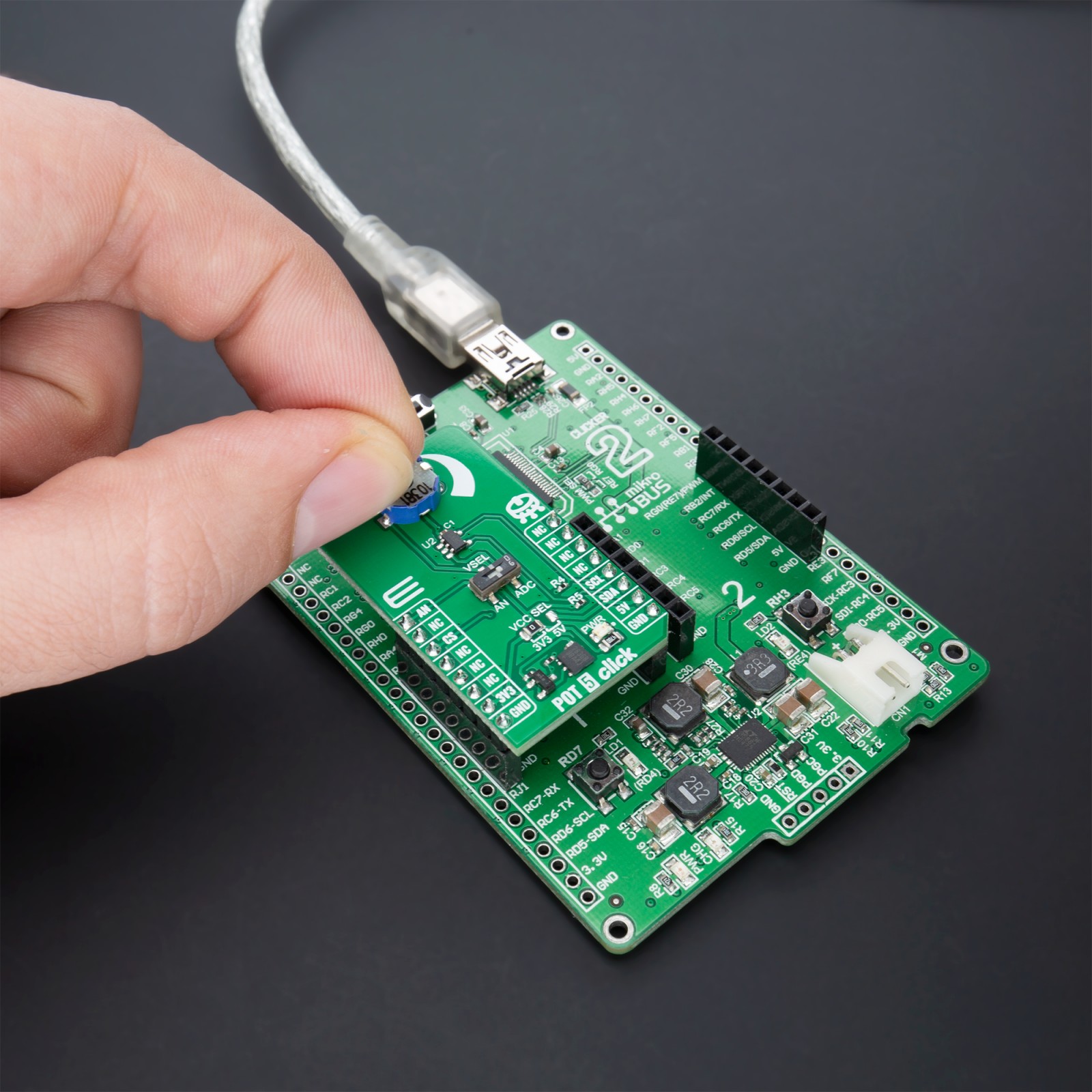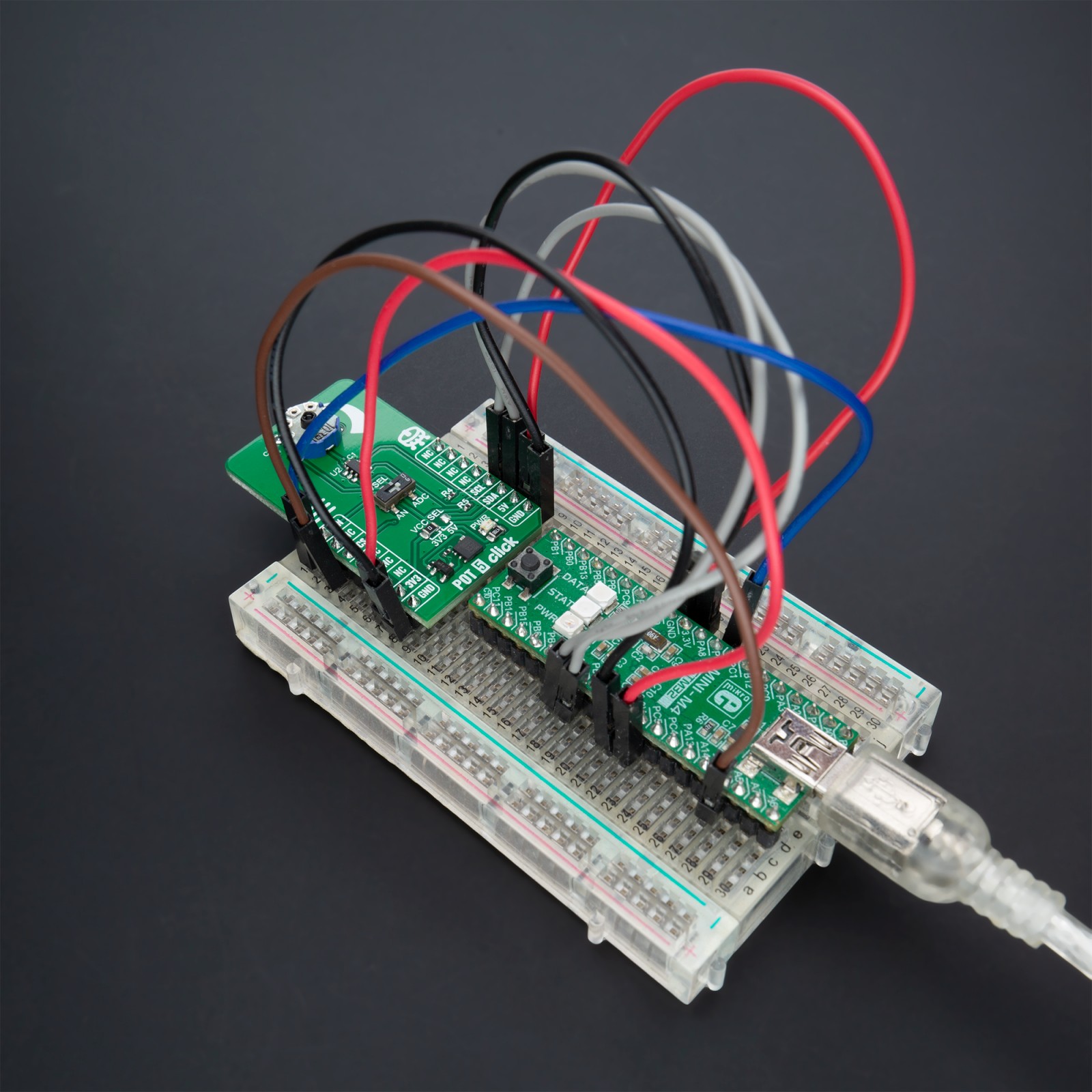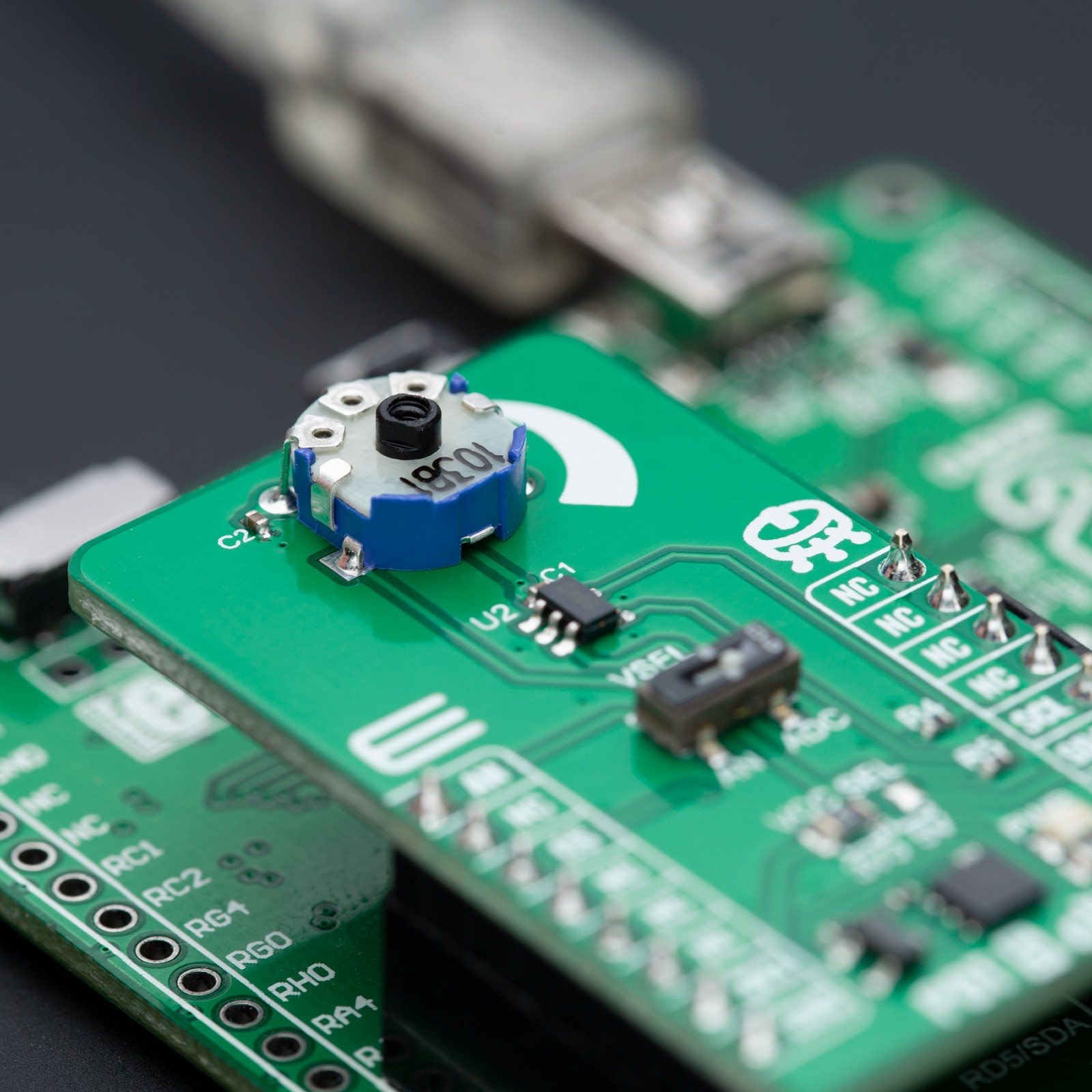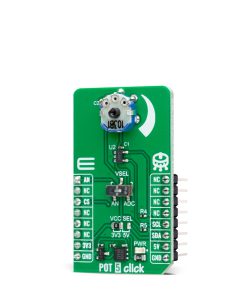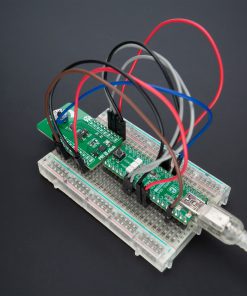POT 5 Click
R405.00 ex. VAT
POT 5 Click is a compact add-on board with accurate selectable reference voltage output. This board features the PDB081-P10-103B1, a high-quality 8mm micro rotary 10k potentiometer from Bourns. The PDB081-P10-103B1 potentiometers operate over a wide temperature range, withstanding 50V maximum voltage. This rotary potentiometer offers 5Ω maximum resistance, 0.03W power rating, and 100mV maximum sliding noise. This Click board™ can be used in any application that requires an analog or digitized control voltage, HMI applications, test, measurement, or laboratory equipment.
POT 5 Click is fully compatible with the mikroBUS™ socket and can be used on any host system supporting the mikroBUS™ standard. It comes with the mikroSDK open-source libraries, offering unparalleled flexibility for evaluation and customization. What sets this Click board™ apart is the groundbreaking ClickID feature, enabling your host system to seamlessly and automatically detect and identify this add-on board.
Stock: Lead-time applicable.
| 5+ | R384.75 |
| 10+ | R364.50 |
| 15+ | R344.25 |
| 20+ | R331.29 |

